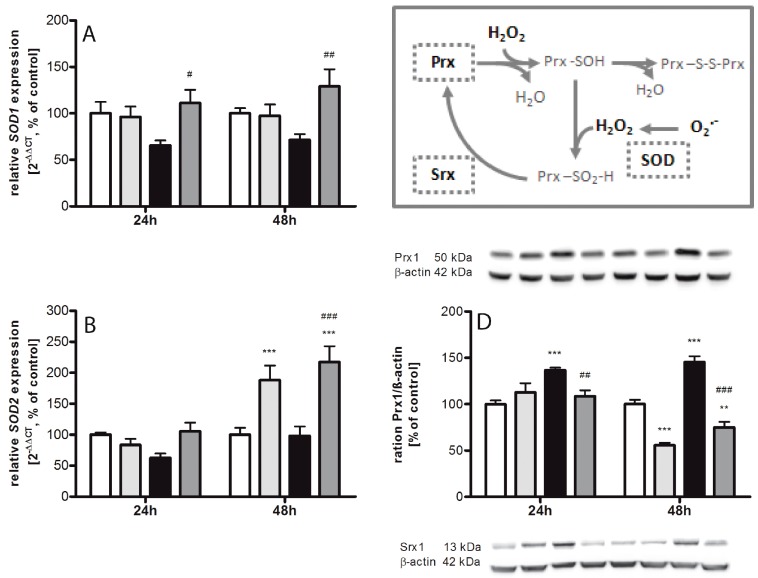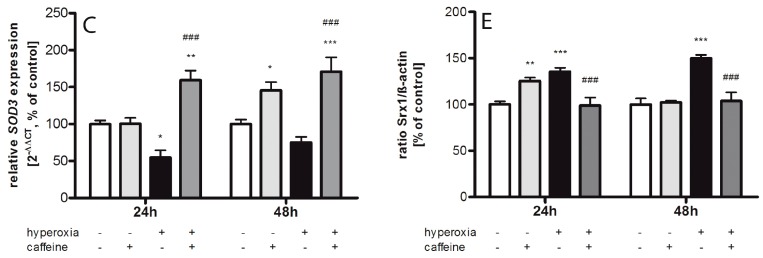Figure 2.
Caffeine modulates antioxidative enzymes. (Box) The high production of ROS under oxidative stress requires the existence of a set of ROS scavenger mechanisms. These are firstly, the group of superoxide dismutase (SOD), which are not only able to scavenge ROS but also repair cell damage and possibly serve as redox sensors, and secondly, the thiol-based antioxidants peroxiredoxin (Prx) as well as sulfiredoxin (Srx), which are major internal housekeeping antioxidant molecules that act as redox switches to modulate homeostasis. SOD isoform mRNA expression was analyzed in brain homogenates. Quantification of mRNA expression by quantitative real-time PCR of: (A) SOD1; (B) SOD2; and (C) SOD3; and protein expression measured by Western blot of: (D) Prx1; and (E) Srx1. Groups are shown as normoxia (white bars), hyperoxia (black bars), with and without caffeine (dark grey and light grey bars, respectively) as mean ± SEM, n = 4–5 per group per time point. The 100% value is: (A) 1.031 and 1.006 CT; (B) 1.002 and 1.025 CT; (C) 1.005 and 1.007 CT; (D) 0.87 and 0.61 ratio intensity/mm2; and (E) 0.39 and 0.67 ratio intensity/mm2, for 24 h and 48 h groups, respectively. Data were analyzed by two-way ANOVA with Bonferroni post hoc test, with * p < 0.05, ** p < 0.01, and *** p < 0.001 versus control (atmospheric air), and # p < 0.05, ## p < 0.01, and ### p < 0.001 versus hyperoxia (80% oxygen without caffeine).


